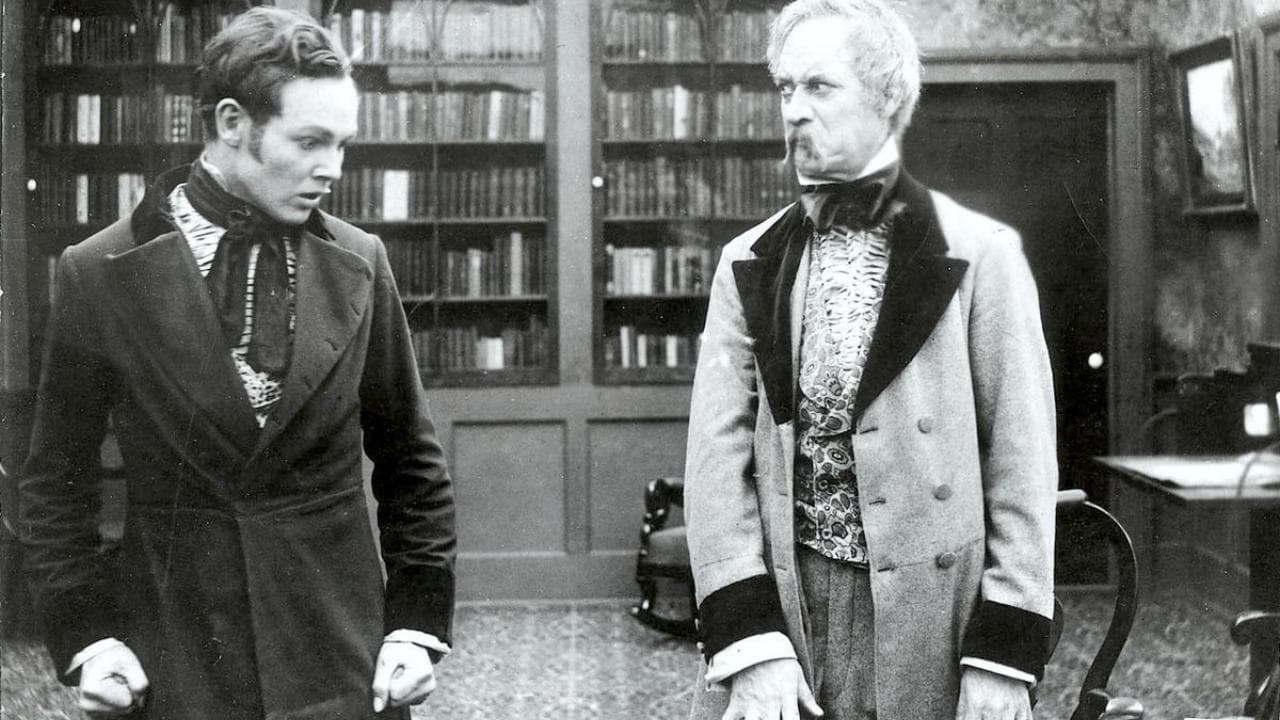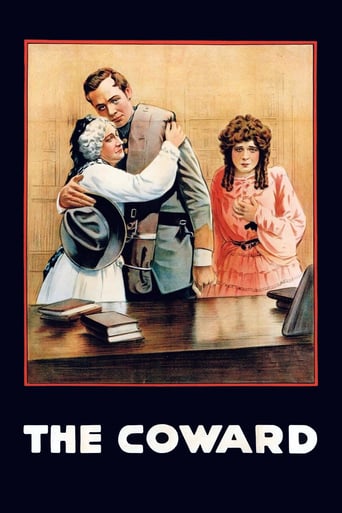YouHeart
I gave it a 7.5 out of 10
Livestonth
I am only giving this movie a 1 for the great cast, though I can't imagine what any of them were thinking. This movie was horrible
Sarita Rafferty
There are moments that feel comical, some horrific, and some downright inspiring but the tonal shifts hardly matter as the end results come to a film that's perfect for this time.
Roxie
The thing I enjoyed most about the film is the fact that it doesn't shy away from being a super-sized-cliche;
jjnxn-1
A story of the old code of family honor at the dawn of the Cibil War and the way that reluctance to throw one's life away was treated with disgrace and exile. The acting is overwrought by today's standard but mixed in with the exaggeration are some bits of touching human emotion.Seeing as the film is now one hundred years old and was made about facts that at that point were only fifty years in the past the film makers were able to have a perspective on events that is impossible to us now. As such this is a precious piece of cinema. As a movie it's a hoary old chestnut but as an historical document it's fascinating. The damage to the print actually adds to the feeling that you're watching a series of Matthew Brady daguerreotypes come to life.
MartinHafer
I think a lot of the impact of this early silence feature film is lost today, but more about that later in the review. When it was released in 1915, attitudes about plot and drama were very different than today. Predictability was expected from movies and what we would consider over-acting was the norm. Also, having white folks run around in black face playing slaves was, unfortunately, pretty widely accepted. And so, by 1915 standards, this is an exceptional movie and one of the earliest full-length films ever made. I think it is a lot better than its much-admired contemporary, BIRTH OF A NATION--which is ponderously long and one of the most racist films made in America. Unfortunately for the makers of this film, people in 1915 preferred BIRTH OF A NATION and it went on to make a ton of money and was hailed as one of the greatest films ever made. That's really a shame, because there are some exceptional aspects to this film that have been overlooked. In particular, the costumes and battle sequences are excellent (though not quite as grand as those in BIRTH OF A NATION) and the story, though very simplistic and predictable, is still compelling. And, its use of two white folks in black makeup, though appalling, is not nearly as offensive as about 90% of the other film.Now, as for today's audiences, the plot is very very dusty to say the least. Having the son be afraid of war and deserting was excellent, but the contrived way that his own father accidentally shoots and kills him in battle is so over-the-top dramatically (though not in its day). BUT, it is STILL worth seeing for its historical value. Not a great or memorable film, but one of the most watchable of the early feature-length films.
dglink
The simple and, by now, oft-told tale of a son who fears that he cannot live up to the high standards of his father may have been fresher in 1915 than it seems today. However, viewers of early silent films should put themselves into the perspective of the times and relish a Civil War story that was filmed while many in the audience could still remember the actual war. The Civil War took place only 50 years before "The Coward" was made, which is approximately the same time span between World War II and "Saving Private Ryan." A fresh-looking Charles Ray portrays Frank Winslow, the son of a proud and unyielding Southern gentleman, and his performance is the most naturalistic of the small cast. A handsome young man with an appropriately innocent demeanor, Ray manages to convey his ambivalence about resisting enlistment in the Confederate Army, a move that will alienate him from his stern father, who insists that his son uphold the family honor. Bowing to his father's orders and threats, the young man joins the army, where he makes a fateful decision. Although subsequent events play out as anyone could predict, viewer interest never lags because the film is tight and decently paced.Unfortunately, much of the cast, especially Frank Keenan as the father, are either stiff or overly emotive in their roles, which makes Ray that much more appealing in contrast. Characteristic of the times, white actors in black face play the two household slaves. While the condition of the print makes evaluation of the cinematography difficult, the interior scenes for the most part betray the flimsy sets that were used. However, the exterior shots, especially the brief battle scenes, are convincing and effective."The Coward" is an amiable film with a well-worn plot and is likely typical of silent films that were produced prior to the 1920's. While neither a work of art nor even the best of its era, the film offers an interesting glimpse of what entertained moviegoers during the years before World War I.
Cineanalyst
At most, this might lead you to appreciate the watershed brilliance of "The Birth of a Nation". Another 1915 feature-length film set during the American Civil War, "The Coward" is an isolated melodrama, in lieu of scope or scale, with only one or two comparatively small skirmishes, affecting, in whole, neither interest or controversy. Most similar between the two films is probably their theatricality--the staginess of camera placement and missing walls, the way of storytelling and the histrionic acting. There are a few rather nice looking shots in this film, actually, but the entire picture is poorly crafted and choppy at times. The story of a father forcing his coward son at gunpoint to enlist for the Confederate army--and so on--is forgettable. Perhaps suitable on stage, Frank Keenan's rigor mortis stances and facial contouring are so out of place its laughable. Poor commemoration for Ince.(Note: The print I saw is in poor shape in parts--possibly causing some of the choppiness.)

